Burnout in the Law: Why the Profession Is Nearing Breaking Point
By Dr. Katherine King | CEO, Yarris Technologies | Co-founder, Dazychain
Executive Summary
The legal profession is in a quiet crisis. Our survey of 100 lawyers across firms and in-house roles reveals a workforce nearing its limit. Not just from long hours, but from blurred boundaries, ignored health warnings, and a growing sense of being trapped in unsustainable patterns.
Key findings include:
- 46% report having no work-life balance at all.
- 54% can’t remember their last full day offline.
- 35% feel emotionally drained almost daily with the same proportion thinking about quitting weekly.
- 51% work over 50 hours per week.
This isn’t isolated stress; it’s a systemic issue. Burnout in the law is not a matter of individual resilience. It’s a structural problem with real consequences: rising turnover, diminished performance, and long-term health costs.
Introduction: The Legal Profession Can’t Afford to Look Away
At Dazychain, we work closely with legal teams navigating complex, high-stakes work. But over the past year, we’ve heard a troubling shift in tone: beneath the professionalism, there’s fatigue. Beneath the fatigue, a sense of quiet desperation.
That’s why we ran this survey, moving beyond the anecdotal to gather clear, honest insights into how lawyers are coping.
The results are sobering. We found a profession pushing itself to the brink, often without support, and with very few off switches.
This paper unpacks those findings and explores how firms and legal departments can, and must respond.
Infographic: The Hidden Cost of Perfection in Law
Our recent survey visualises how overwork and emotional fatigue are reshaping the legal profession.
 Want to share this infographic on your site?
Want to share this infographic on your site?
Copy the embed code below to include it in your own article (please credit Dazychain).
💡 Share this infographic
Please copy the code below to embed it (includes credit to Dazychain).
<a href="https://www.dazychain.com/blog/burnout-in-the-law-why-the-profession-is-nearing-breaking-point/"> <img src="https://www.dazychain.com/wp-content/uploads/2025/10/Dazychain-Burnout-Infographic-B-scaled.webp" alt="Lawyer Burnout Infographic by Dazychain" style="max-width:100%;height:auto;" loading="lazy"> </a> <p>Infographic by <a href="https://www.dazychain.com">Dazychain</a></p>
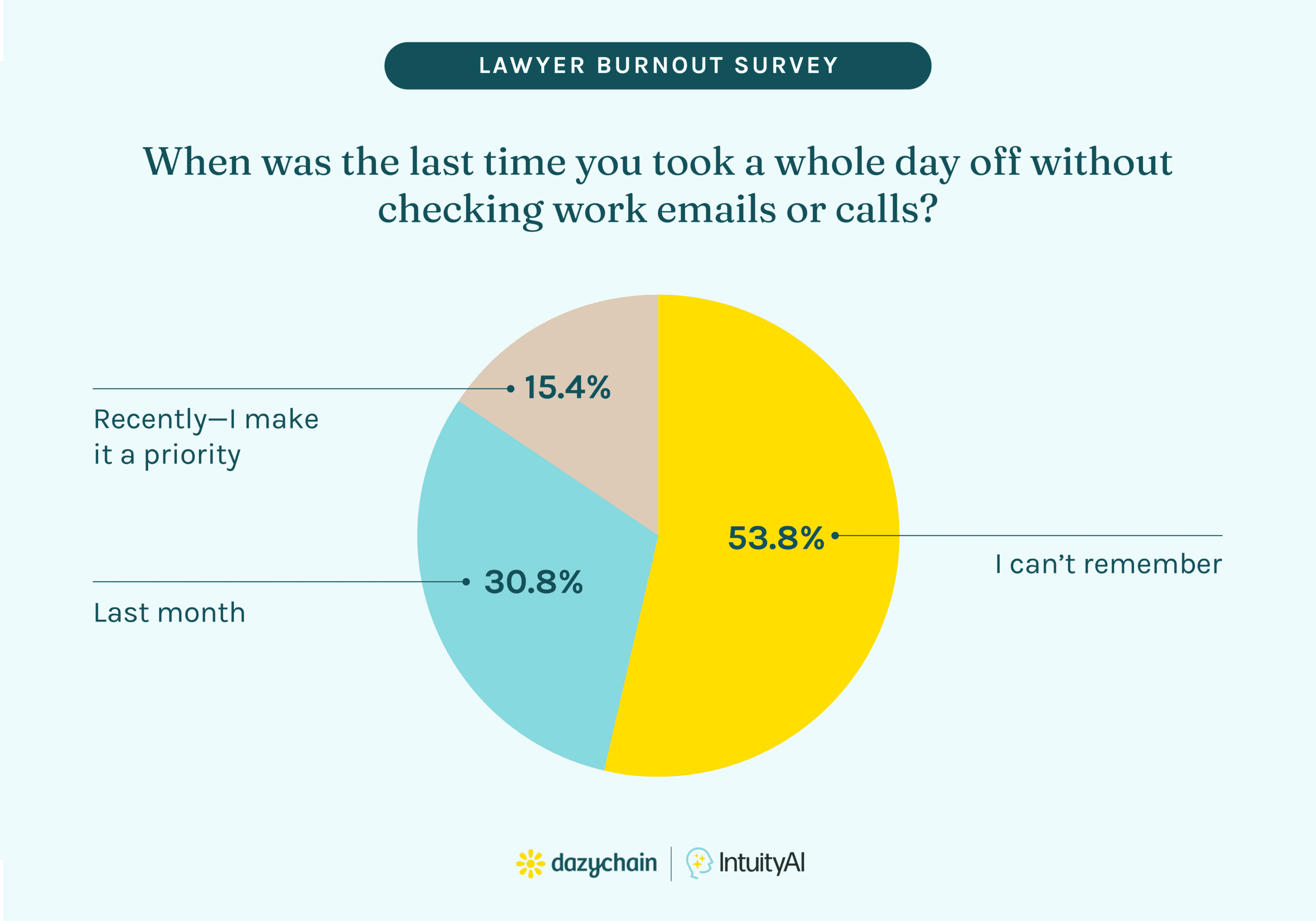
This isn’t about ambition. It’s about a culture that expects team members to be always on, which is a recipe for burnout, disengagement and errors.
2. The Hidden Health Costs: The Toll of Carrying On
Lawyers are taught to “push through.” But the data shows just how much that’s costing them.
- 46% say their job impacts their health, but they ignore it.
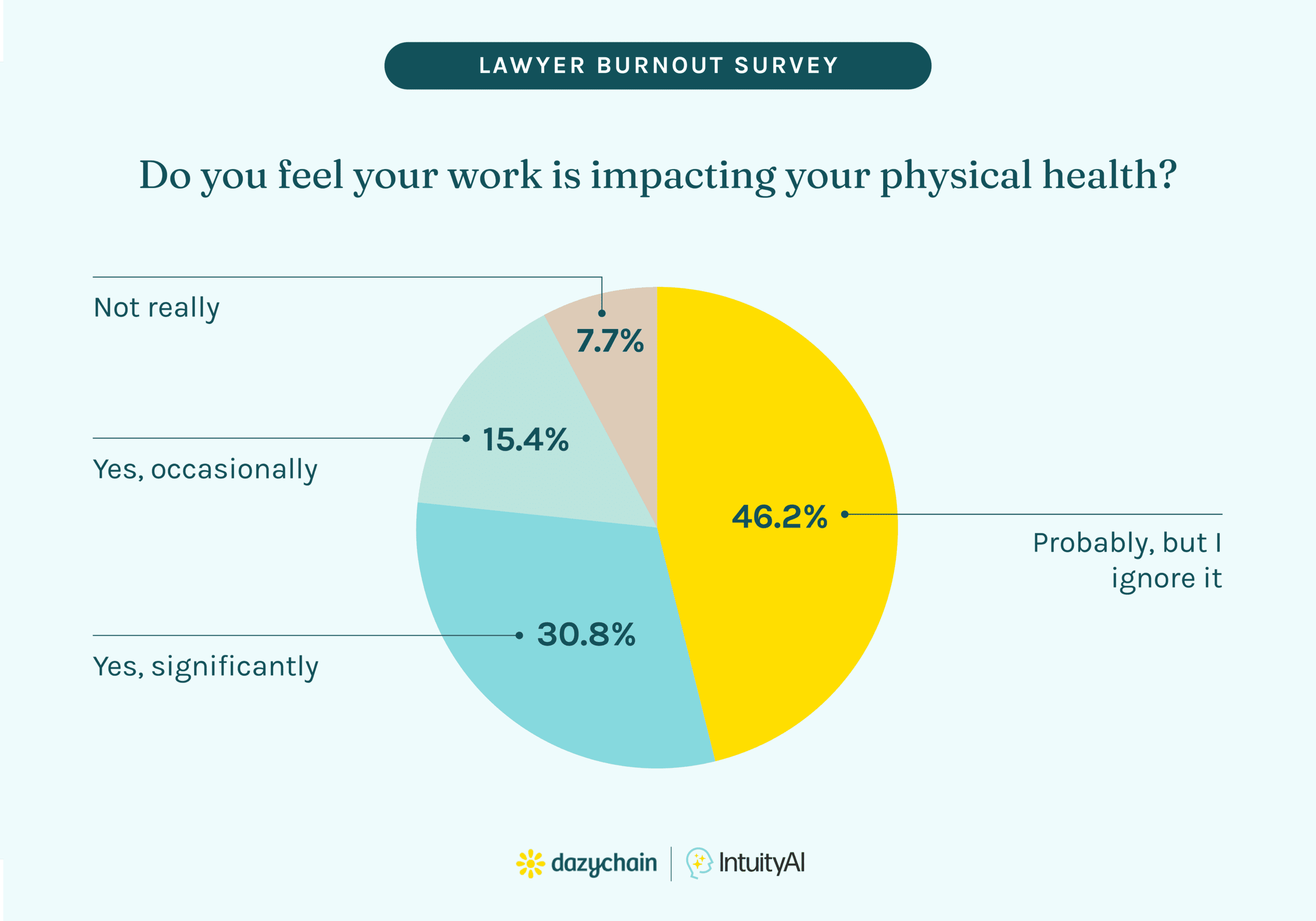
- 35% feel emotionally drained almost daily; another 14% a few times a week. That’s nearly half the profession experiencing regular emotional exhaustion.
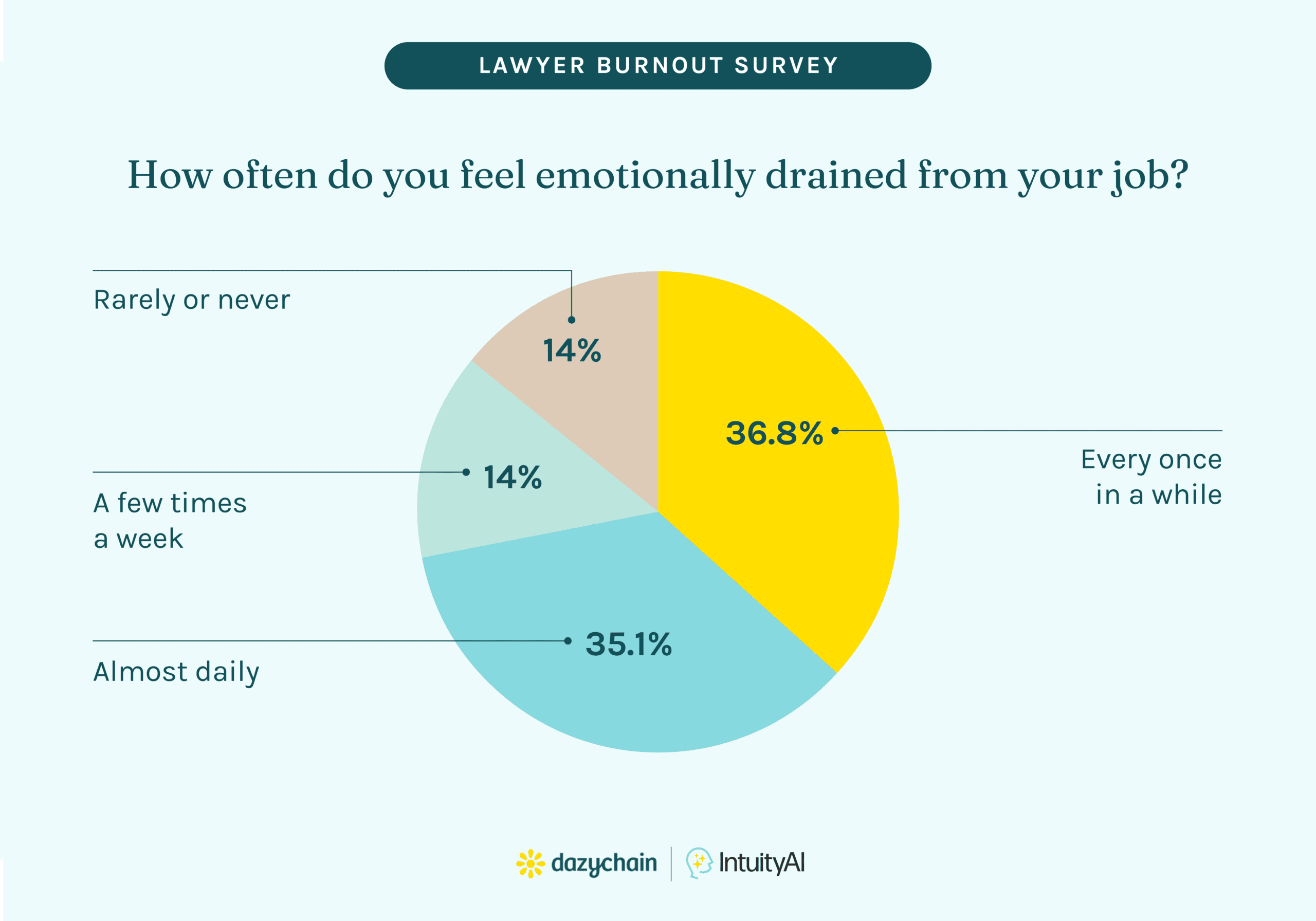
- 38.5% deal with stress by avoiding everything until the deadline, while 31% lean on caffeine to keep going.
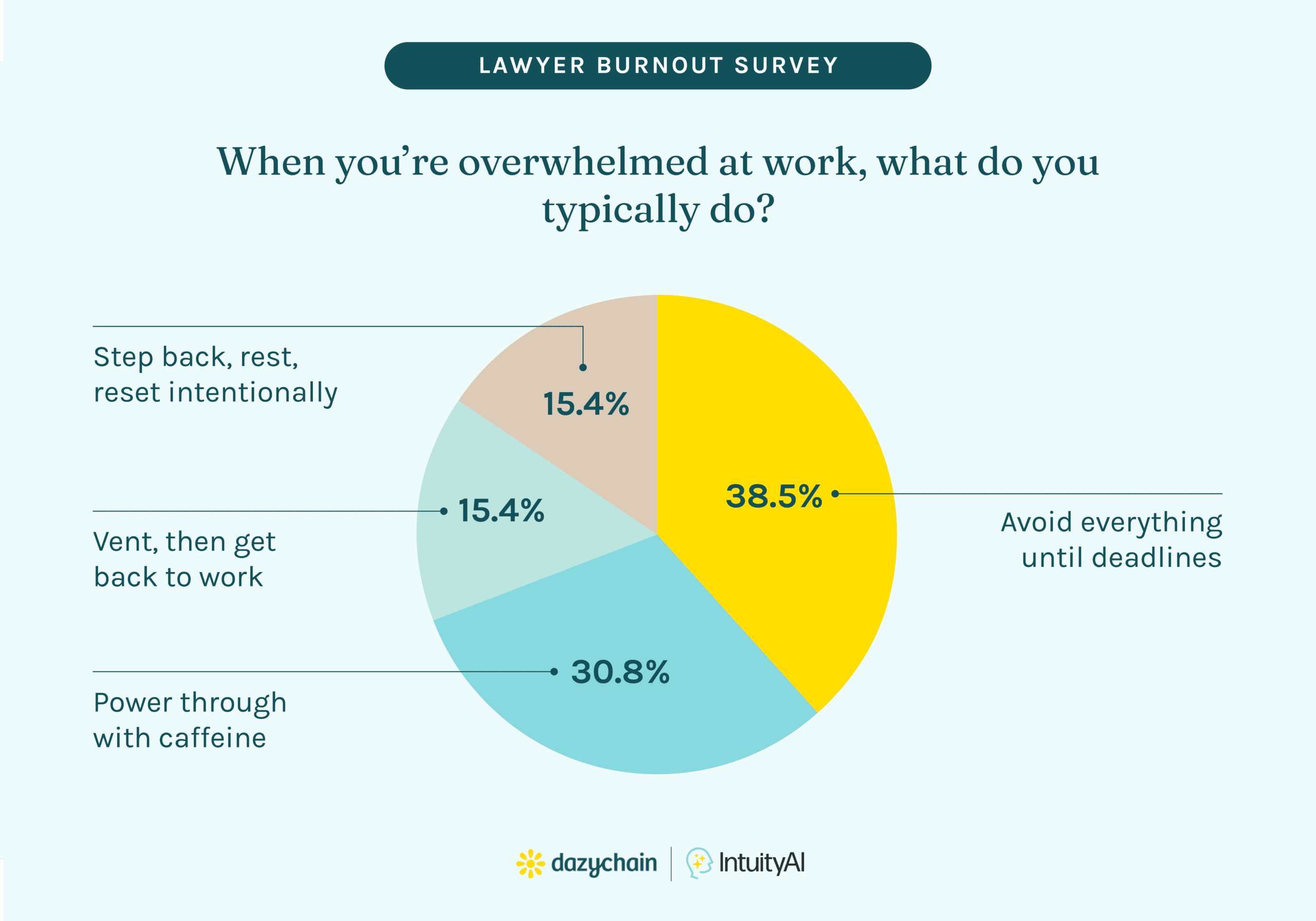
These are not sustainable coping strategies. They’re signals of strain, and if firms don’t listen, the cost will be high. This could include increased absenteeism, presenteeism, and long-term health claims.
The cost of burnout is not just emotional, it’s economic. Studies have estimated the annual cost of burnout to industries like law runs into the billions, driven by turnover, absenteeism, and declining productivity. According to the World Health Organization, burnout contributes to $1 trillion in lost productivity globally each year. For legal teams, that manifests in recruiting costs, lost hours, and the quiet cost of disengagement. When lawyers are working sick, stressed, or emotionally spent, they don’t work better – they’re slower, they make mistakes, and they leave.
3. Burned Out & Trapped: The Retention Risk Hiding in Plain Sight
Burnout doesn’t just affect well-being, it affects retention.
- 35% think about quitting weekly or more.
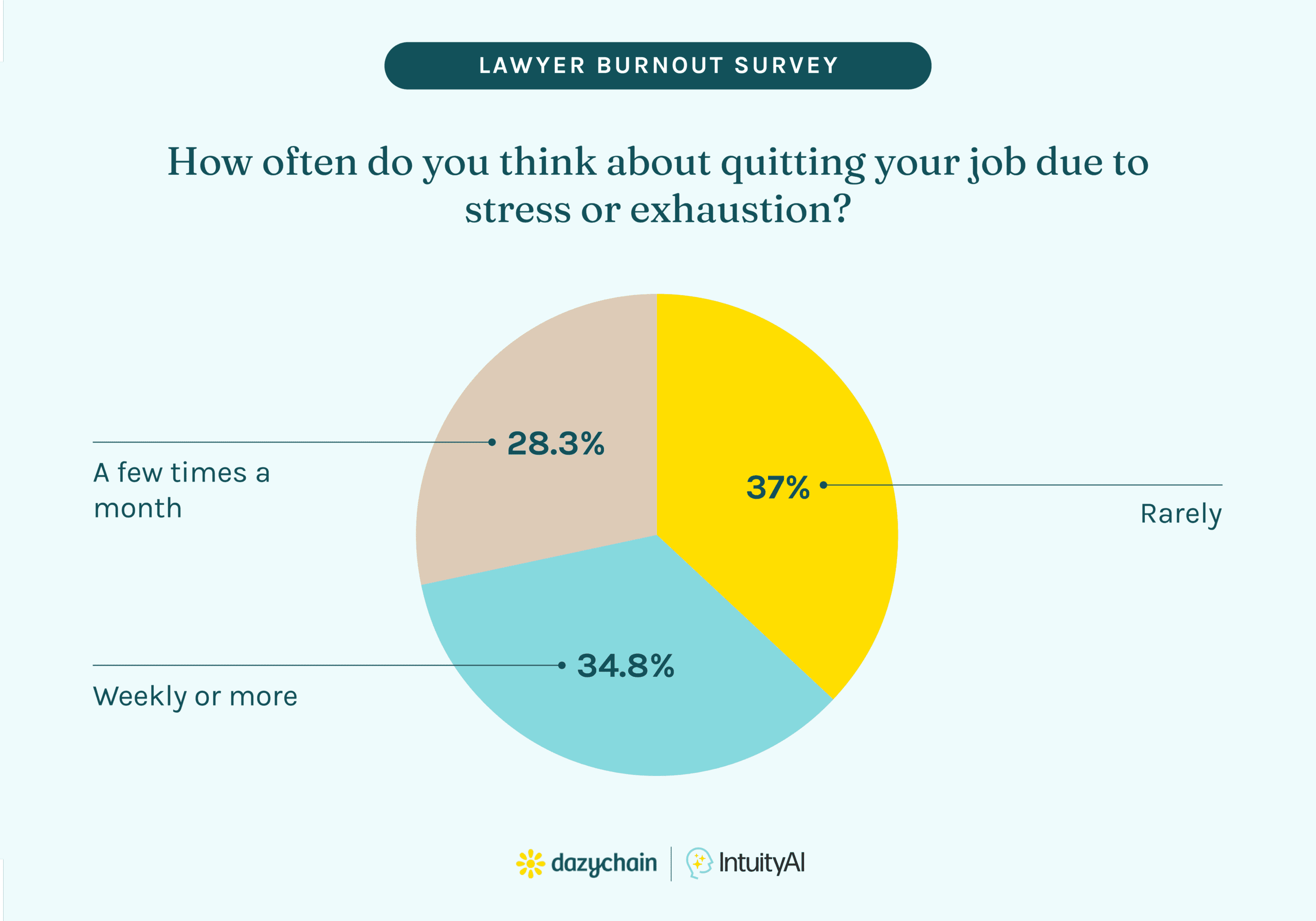
- 30% feel “burned out and trapped”. Only 23% feel engaged and in control.
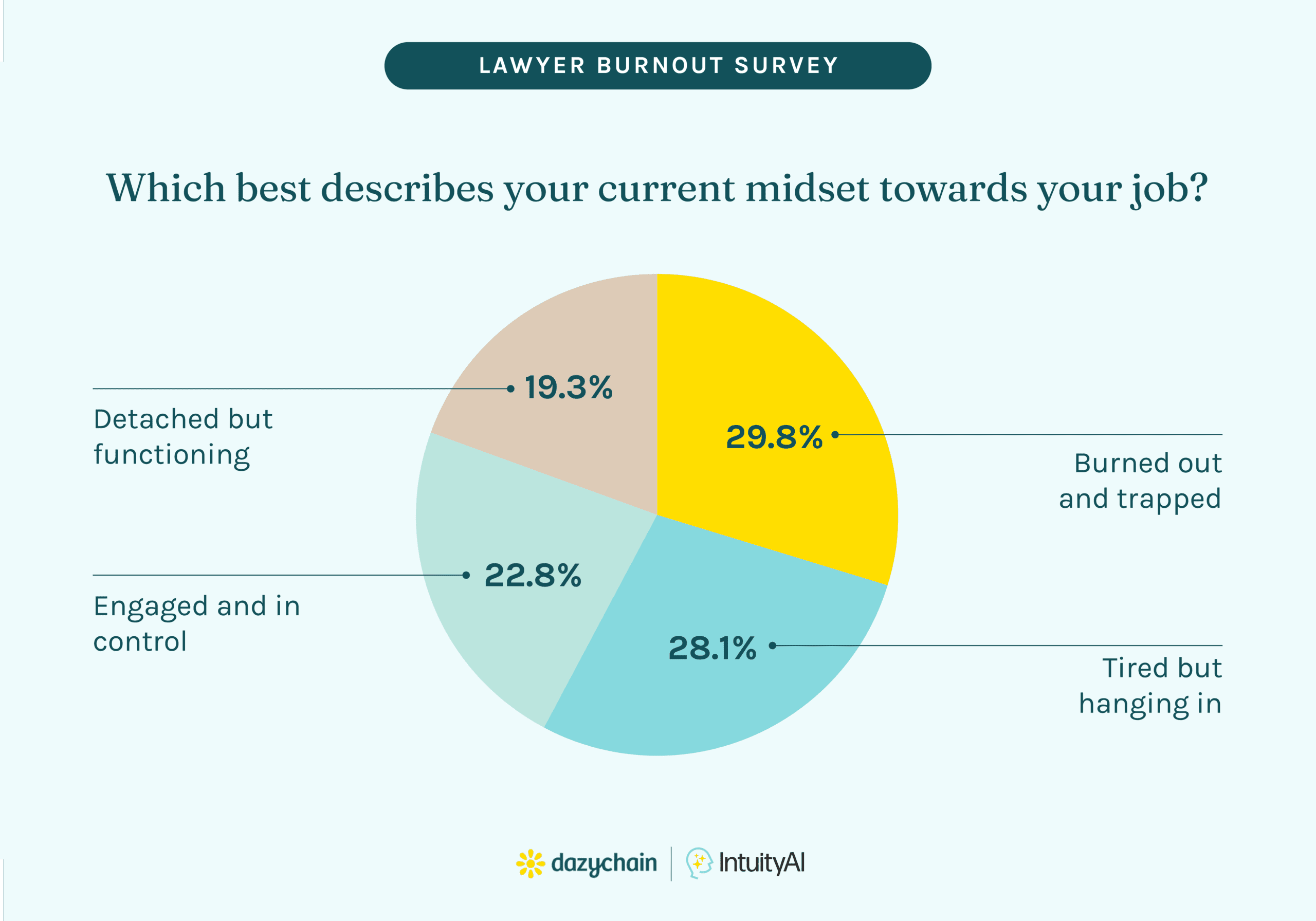
- 41% work 50–70 hours per week.
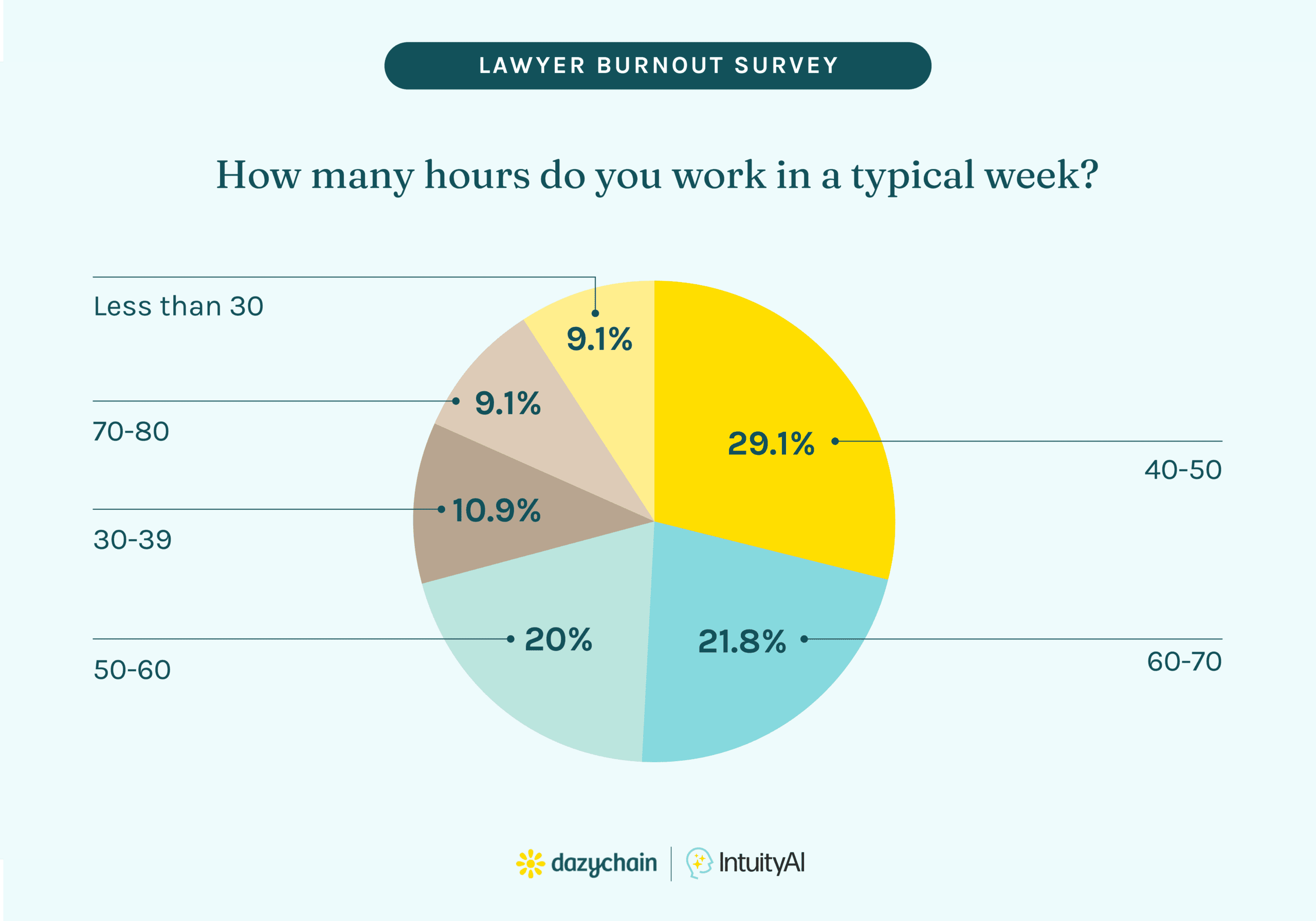
When people feel stuck with no way out and no time to recharge, they disengage. They start to make mistakes. They leave.
Or worse: they don’t leave, but they quietly withdraw, delivering the bare minimum while their mental and emotional energy is spent elsewhere. This is how organizations lose performance long before they lose headcount.
This isn’t just about work. It’s about life. Chronic burnout doesn’t stay at the desk, it follows lawyers home. Studies have shown that professionals in high-stress, high-hours roles like law experience higher rates of divorce, strained family relationships, and isolation. When evenings and weekends are devoured by work, personal connections suffer. The legal profession asks for everything – and too often, it gets it, at the cost of relationships, marriages, friendships, and a sense of self outside the role.
Conclusion: This Is a Business Problem, Not Just a Personal One Legal burnout is a wellness issue, and the impact of it cascades into talent retention, productivity and profitability
When lawyers are constantly on, under pressure, and unsupported, they don’t just suffer, they stop performing at their peak. That affects client outcomes. It affects the firm’s reputation. It affects the bottom line.
But here’s the opportunity: firms that do act, that draw real boundaries, build smarter workloads, and invest in wellbeing will attract and retain the best talent. They’ll be the ones who stand out in a competitive market, not just for their legal skill, but for how they treat their people.
What Needs to Change – and Where to Start
- Make downtime mandatory.Model it from the top. No emails at midnight. No silent expectation that people are “always available.”
- Track well-being.Survey your teams regularly. Treat disengagement and burnout as critical business risks.
- Automate the grunt work.Automation reduces the administrative burden. Tools such as intake forms, automated triage, contract templates, and the use of AI reduce the drain on the legal team’s energy. Technology can do the heavy lifting.
- Put people before processes.That means flexible hours. Mental health support. Space to recharge without guilt.
- Get help changingOrganizations don’t have to do it alone. External consultants who specialise in legal transformation and change management are effective in overseeing the strategic design and direction to ensure the organisational change is successful.This takes place through a series of phases, including planning, process operationalisation, and defining the measures of success. These professionals work with team members from all levels of the organisation who become guardians for the organisational change. They advocate for process adoption, while supporting other team members in areas they may find challenging.The benefit of engaging an external party is that they are immune to organisational politics, existing cultural norms and are more readily perceived as being free of preexisting opinion or prejudice.Ultimately, it will be for the organisational as a whole to adopt the change, senior management to support the internal guardians to ensure that the relevant processes are adopted, and to effectively communicate the benefits of each KPI that is reached.
At Dazychain, we’re not just building platforms for legal work. We’re building systems that give legal teams their time, clarity, and autonomy back. Because that’s what truly sustainable performance looks like.
The legal profession is nearing a breaking point. It doesn’t have to break. But change won’t come from individuals pushing harder, it has to come from the system itself.
Now is the time to lead it.



 Want to share this infographic on your site?
Want to share this infographic on your site?






